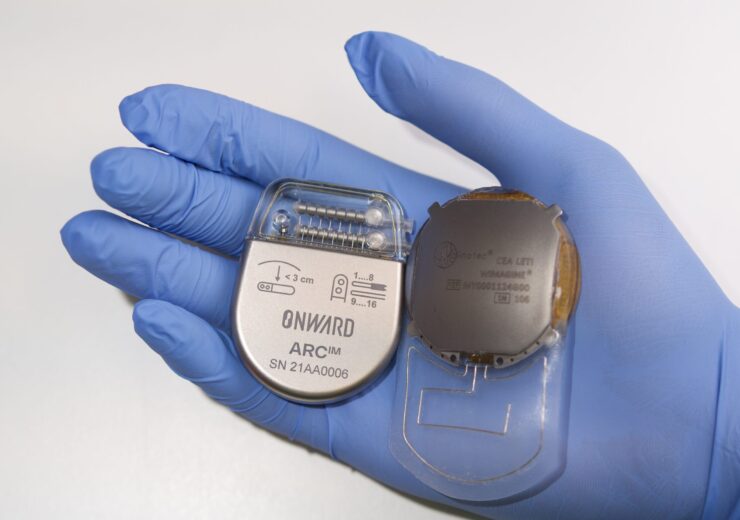Together with the ARC-IM Stimulator, patients also received a wireless brain-computer interface (BCI), which enables the delivery of targeted, programmed ARC-IM Therapy to the spinal cord to restore movement and other functions after spinal cord injury

The patient also received a wireless BCI implant. (Credit: ONWARD Medical NV/GlobeNewswire)
Dutch medical technology company Onward Medical has completed the first-in-human implant of its ARC-IM Stimulator, to restore upper extremity function after spinal cord injury (SCI).
The patient also received a wireless brain-computer interface (BCI), which enables thought-driven movement when used together with the ARC-IM Stimulator.
Onward said that its ARC-IM Stimulator is designed to deliver targeted, programmed ARC-IM Therapy to the spinal cord to restore movement and other functions after spinal cord injury.
ARC-IM Therapy has been tested across multiple clinical feasibility studies to restore mobility and stabilise blood pressure after SCI.
It is the first application of the ARC-IM Therapy for restoring upper extremity movement and function, said the Dutch medical technology company.
Onward CEO Dave Marver said: “We are excited to learn how ARC-IM Therapy may restore upper extremity function after SCI, and we are eager to see how the addition of a BCI might augment our therapy.
“Congratulations to the teams at EPFL, CHUV, and CEA-Clinatec for this breakthrough. We feel privileged that our technology is part of this research.”
Last month, Dr. Jocelyne Bloch, a neurosurgeon at the Centre Hospitalier Universitaire Vaudois (CHUV) in Lausanne, Switzerland, performed the two procedures.
The ARC-IM Stimulator was implanted on 14 August 2023, and after nine days the BCI WIMAGINE from CEA-Clinatec was implanted.
The BCI, which works together with the ARC-IM, is designed to capture the intention of a paralysed individual to move their upper extremities and uses AI to decode their thoughts.
ARC-IM then converts the decoded information into ARC-IM Therapy, which delivers precise stimulation of the spinal cord, to result in thought-driven movement.
The first-in-human use of the BCI technology is part of an ongoing clinical study evaluating the safety and effectiveness of thought-initiated spinal cord stimulation after SCI.
Furthermore, the study is supported by the European Innovation Council.
Bloch said: “The implant procedures involving the ONWARD ARC-IM and Clinatec BCI went smoothly. We are now working with the patient to use this cutting-edge innovation to recover the movement of his arms, hands, and fingers. We look forward to sharing more information in due course.”
